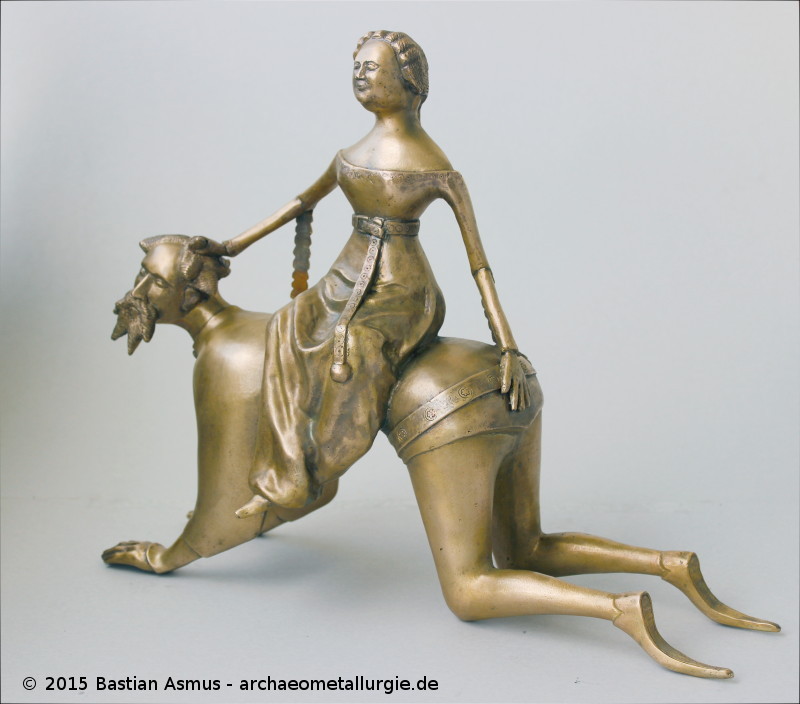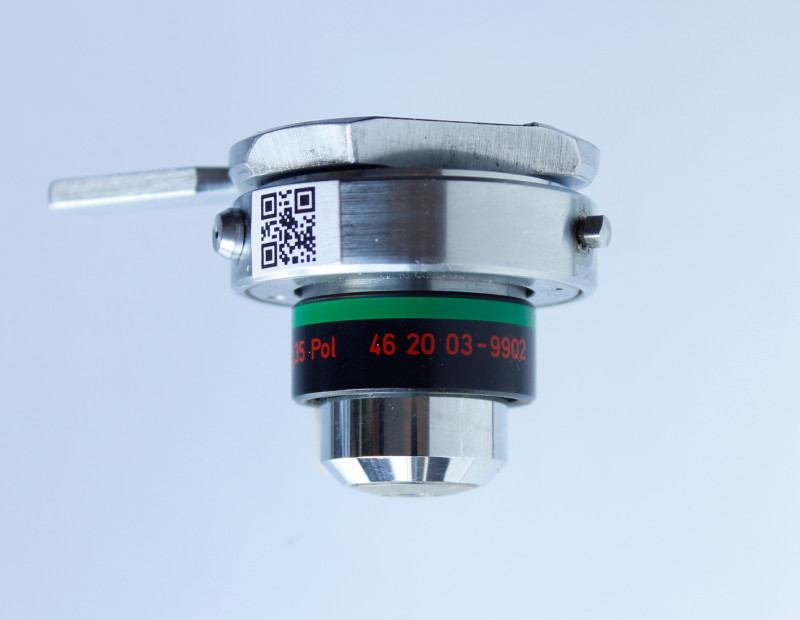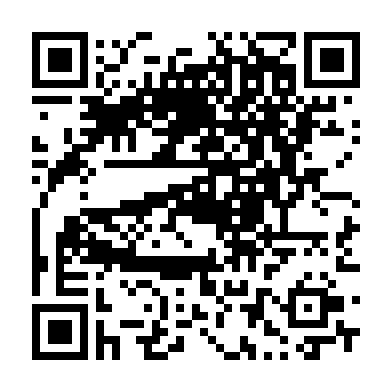Jun
8
2015
Bastian Asmus

Aristotle and Phyllis aquamanile, 2015 by Bastian Asmus made after a 15th century original from the low countries.
The Middle High German lay of Aristotle and Phyllis probably originated in the 13th century in the upper Rhine region between Basel and Strasbourg. The story was a popular motif and is found not only in sculptural works, but also in tapestries and drawings. King Philip of Macedonia’s son Alexander, later called the Great, is educated by Aristotle. The young Alexander, madly in love with the beautiful Phyllis, is scolded by his teacher for his mental absence and warned of the dangers of love and/or women. Aristotle effects the separation of the lovers through intervention with the King. Musing on revenge beautiful Phyllis seduced Aristotle. As price for her love she demanded that she could ride around in the gardens on his back. Whilst doing so Aristotle is discovered by the Queen and Aristotle falls prey to shame and disgrace, because he could not meet his own requirements. He was exiled and pondered over the wickedness of the world.

Aristotle and Phyllis. Hausbuchmeister 15th century. Source: Wikimedia Commons.
The Aristotle and Phyllis aquamanile was modelled in wax and cast in the lost wax technique. It can now be seen in the newly founded European Hanseatic league Museum.
no comments | tags: Aquamanile, aquamanilia, archaeology, archaeometallurgy, art, casting, practical archaeometallurgy, sculptor | posted in Aquamanile, Archaeometallurgy, Metal casting, practical metallurgy, Reconstructions
Dec
17
2014
Bastian Asmus

 ..for any microscope you might happen to work with. During your microscopy sessions, did you ever wish for less of the dull work, such as noting meta data, contrast method, sample id, photo no or image width? Well – I did.
..for any microscope you might happen to work with. During your microscopy sessions, did you ever wish for less of the dull work, such as noting meta data, contrast method, sample id, photo no or image width? Well – I did.
I did wish for a long time to have a way that my microscope and my camera would speak to each other whenever I change objectives. I am working with Zeiss Universal microscope, mostly with reflected polarising light, i.e. there is no objective revolver. I have to change the objectives individually, which of course, all has to do with the ability to centre the objective for certain steps in polarising microscopy.
To make a long story short: the old days where I have to sit there with a notepad and have to write down all these dull informations are over! From now on my camera, or rather my computer registers any change of my microscope objective and adds this information to my micrographs automatically.
Continue reading
no comments | tags: archaeology, archaeometallurgy, How to, linux, photograhpy | posted in Image Meta information, Lab work, Micrograph, Photography, remote capture, tethered shooting
Oct
29
2014
Bastian Asmus


Wouldn’t it be great if you could add meta data to your image files while doing the actual photographing instead of having to do this afterwards in post processing? In this two part article I present how using QR codes and tethered shooting, can achieve this goal when documenting objects. It saves a lot of time, for example, during archaeological find processing and documentation. The first part deals with the manual creation of QR codes, the second part with a script-based solution, that automates the process of adding meta data to image files. Continue reading
1 comment | tags: archaeology, archaeometallurgy, How to, linux, photograhpy



 ..for any microscope you might happen to work with. During your microscopy sessions, did you ever wish for less of the dull work, such as noting meta data, contrast method, sample id, photo no or image width? Well – I did.
..for any microscope you might happen to work with. During your microscopy sessions, did you ever wish for less of the dull work, such as noting meta data, contrast method, sample id, photo no or image width? Well – I did.